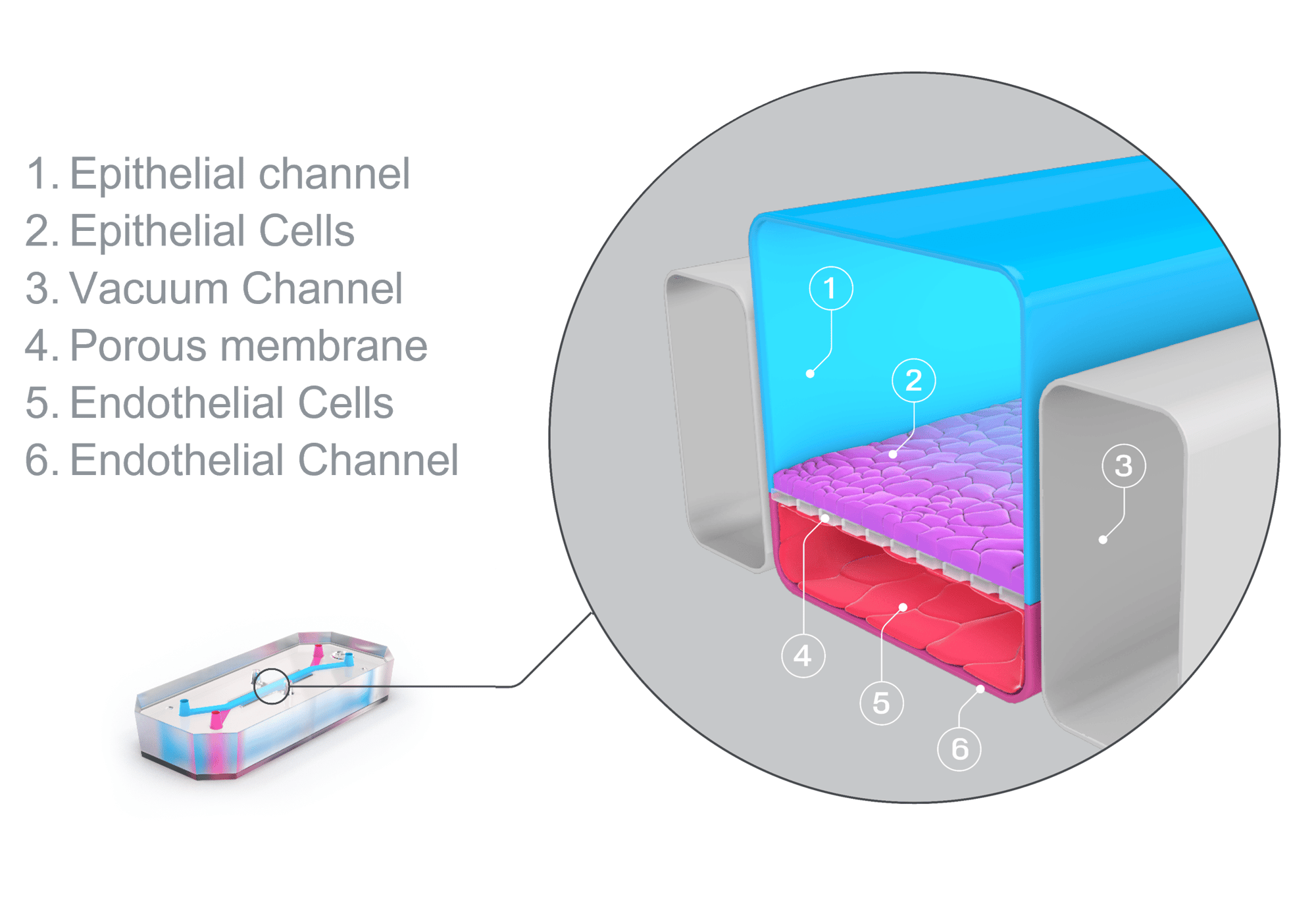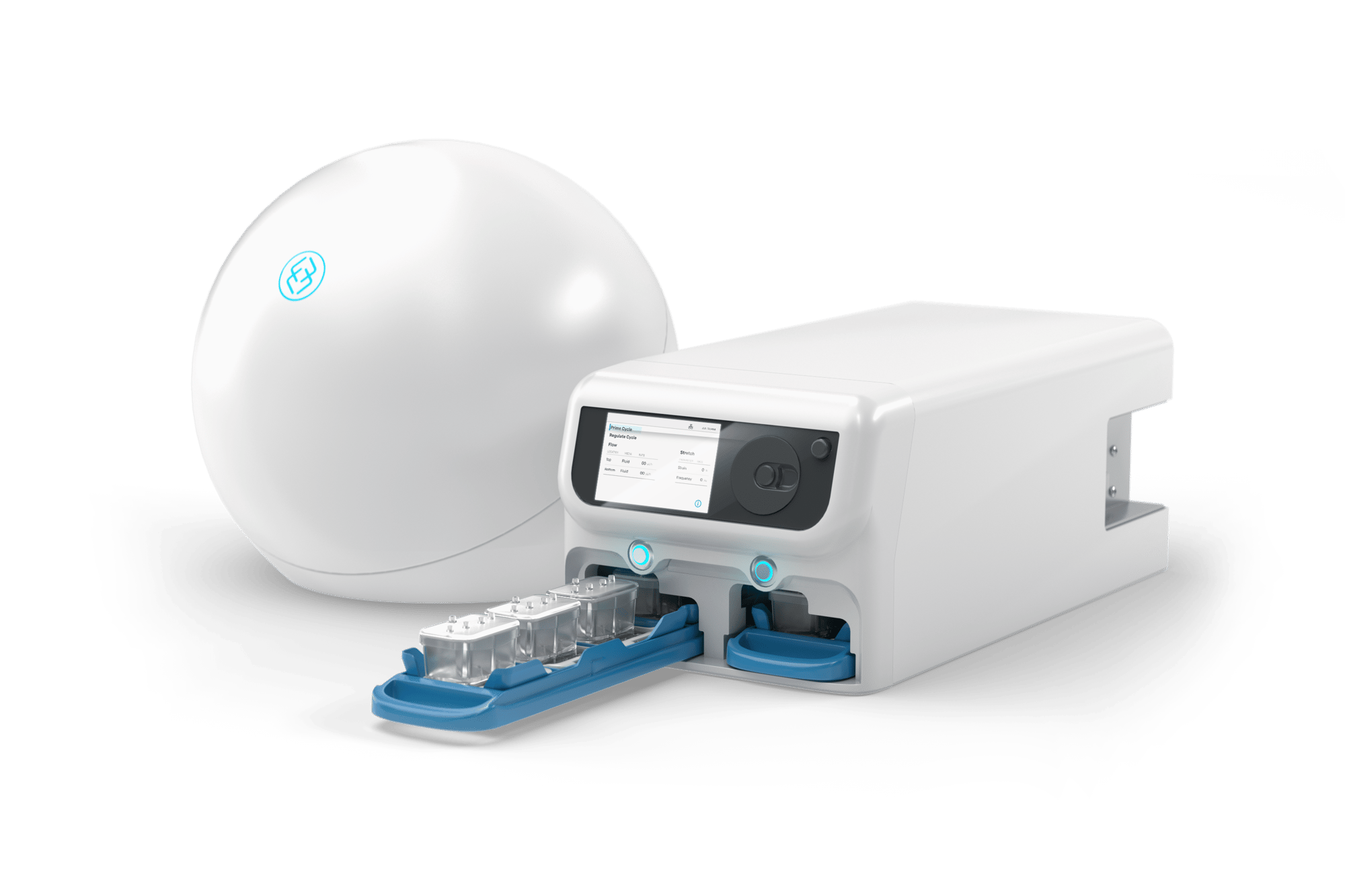THE EMULATE INFECTIOUS DISEASE GRANT PROGRAM
Ready to increase the human relevance of
your research?
Apply today for the Emulate Infectious Disease Grant. One winner will receive an award worth over $150k that includes the essential equipment, consumables, and support needed to get started using Organ-Chips for infectious disease research.
Read on to learn more about the grant program and why researchers are turning to Emulate Organ-Chips for modeling viral and bacterial infection.
Applications are now closed—the winner will be announced by November 17th.

The challenge of infectious disease research
Infectious disease is a major cause of global mortality, causing ~14M deaths annually. In the past 3 years, an additional 7M+ people have died from the COVID-19 pandemic alone.
Unfortunately, research into viral and bacterial infection has been hampered by the limitations of conventional research models. Conventional in vitro models often fail to develop efficient viral infection or are quickly overgrown by bacterial infection. Meanwhile, results from animal studies often fail to translate to humans because of species differences—in fact, some infectious diseases are human-specific, meaning it is not possible to test them in animals.
How Organ-Chips can help
Organ-on-a-Chip technology gives researchers a real-time window into the inner workings of human biology.
Emulate Organ-Chips allow researchers to culture multiple human cell types in a dynamic, tissue-specific microenvironment, allowing for deeper insights into the complex and human-specific processes of infection, disease progression, and therapeutic efficacy.
These advanced in vitro models can also provide cyclic stretch, giving researchers the power to recreate the mechanical forces of breathing or intestinal peristalsis and study their effects on viral or bacterial infection.
With over 12+ peer-reviewed studies using Emulate Organ-Chips to better study infectious diseases—including COVID-19, E. Coli, and tuberculosis—only one question remains: How will you use Organ-Chips to break new ground?

Schematic of the Emulate Chip S-1 Stretchable Chip
The benefits of Organ-Chips for infectious disease research
Human-Relevant Cells
Human cells with physiologically relevant gene and receptor expression.Cell-Cell Interactions
Multicellular complexity with endothelial co-culture, enabling route-of-infectious studies

Tissue-Specific Microenvironment
Media flow & cyclic stretch recreate tissue-relevant mechanical forces and support bacterial co-culture
Flexibility
Model a variety of organs and add in additional complexity (immune cells, microbes, therapeutics, etc.)
We'll get you started
One grant winner will be selected to receive an award worth over $150k that includes:
- 1 Zoë-CM2® Culture Module: Automates flow & stretch for up to 12 Organ-Chips
- 1 Orb-HM1® Hub Module: Provides gas and stretch to up to four Zoë-CM2 Culture Modules
- 2 x 24-Pack Basic Research Kits: Contains 24 Chip-S1® Stretchable Chips, 24 Pod® Portable Modules, & chip activation reagents in each kit
- Support: Includes hardware installation and scientific training from Emulate’s Organ-Chip experts

Need some inspiration?
There are 12+ peer-reviewed studies that use Emulate Organ-on-a-Chip technology for infectious disease research. Check out a few highlighted examples below.
THE CHALLENGE
Shigella infection causes ~700k deaths annually, but it remains difficult to study, as it only infects humans, and fails to efficiently infect conventional in vitro models.
THE APPROACH
Pasteur Institute scientists used a Caco-2 Intestine-Chip to study Shigella infection and investigate the role of mechanical forces.
THE INSIGHTS
Organ-Chips allowed researchers to dissect the fundamentals mediating Shigella invasion at the tissue scale, revealing that peristalsis plays a critical role in the infection process.
THE CHALLENGE
As SARS-CoV-2 spread in 2020, researchers struggled to investigate the mechanism of infection, as the virus often fails to infect monoculture models or cell lines.
THE APPROACH
EPFL scientists used the Alveolus Lung-Chip—which includes alveolar epithelium and endothelium—to recreate the natural infection pathway of SARS-CoV-2
THE INSIGHTS
The unique epithelial-endothelial interface provided novel insights, showing how the virus may cause blood clots by attacking endothelial cells directly rather than as a result of cytokine storms.
FAQs
What are Organ-Chips?
Organ-Chips are small, flexible devices that contain two parallel channels. Many types of human-relevant cells can be seeded into these channels, including primary cells, iPSCs, organoids, and immune cells.
The channels are separated by a thin, porous membrane that creates a tissue-vascular interface for cell-cell communication. This membrane is coated with a tissue-specific extracellular matrix (ECM), helping to further drive tissue maturation as one would see
Using Emulate Organ-Chips, researchers can easily control and finely tune the media flow and cyclic stretch Organ-Chips experience, emulating the mechanical forces cells experience in the body—such as peristalsis in the intestines, breathing in lungs, and blood flow through vessels.
When combined, these features result in more in vivo-relevant gene expression, morphology, and functionality than is possible with conventional cell culture methods, leading to more human-relevant results.
What is included with the grant program award?
The grant award includes the essential hardware, Organ-Chips, and scientific support needed to get started using Organ-on-a-Chip technology:
- 1 Zoë-CM2® Culture Module: Automates flow & stretch for up to 12 Organ-Chips. Learn More →
- 1 Orb-HM1® Hub Module: Provides gas and stretch to up to four Zoë-CM2 Culture Modules
- 2 x 24-Pack Basic Research Kits: Contains 24 Chip-S1® Stretchable Chips, 24 Pod® Portable Modules, & chip activation reagents in each kit Learn More →
- Support: Includes hardware installation and scientific training from Emulate’s Organ-Chip experts
- Limited warranty for Zoë-CM2 and Orb-HM1 (13 months from time of shipment)
Use of the Emulate Human Emulation System® is subject to Emulate’s Standard Terms & Conditions of Sale located at emulatebio.com/legal
Does the grant program award include cells?
The grant award does not include cells. The grant awardee must provide their own cell sourcing.
A wide variety of human cells can be cultured using Emulate Organ-Chips, including primary cells, iPSCs, organoids, and immune cells.
Who is eligible for the Emulate Infectious Disease Grant?
Grant applicant (“Applicant”) must be actively employed or enrolled at a company or institution in a role in which they perform cell biology research and must not be a current user of the Emulate Human Emulation Terms and Conditions.
Has there been any infectious disease research published using Organ-Chips?
Yes, a wide variety of infectious disease research using Emulate Organ-Chips has been published in peer-reviewed journals. Explore the full list of publications below.
Viral Infection
| Organ Model | Infection | Link |
| Intestine | Intestine | Human Gut-On-A-Chip Supports Polarized Infection of Coxsackie B1 Virus In Vitro. Read the Paper → |
| Intesine | NL63 Coronavirus | Enteric Coronavirus Infection and Treatment Modeled With an Immunocompetent Human Intestine-On-A-Chip. Read the Paper → |
| Lung: Alveolus | SARS-CoV-2 | The cGAS–STING pathway drives type I IFN immunopathology in COVID-19. Read the Paper → |
| Lung: Alveolus | SARS-CoV-2 | Rapid endotheliitis and vascular damage characterize SARS-CoV-2 infection in a human lung-on-chip model. Read the Paper → |
| Lung: Airway | Pseudo SARS-CoV-2 | A human-airway-on-a-chip for the rapid identification of candidate antiviral therapeutics and prophylactics. Read the Paper → |
| Lung: Airway | Human Rhinovirus | A Microengineered Airway Lung Chip Models Key Features of Viral-induced Exacerbation of Asthma. Read the Paper → |
| Lung: Airway & Alveolus | SARS-CoV-2 | Self-assembling short immunostimulatory duplex RNAs with broad-spectrum antiviral activity. Read the Paper → |
| Lung: Alveolus | Influenza | Mechanical control of innate immune responses against viral infection revealed in a human lung alveolus chip. Read the Paper → |
Bacterial Infection
| Organ Model | Infection | Link |
| Intestine: Colon | E. Coli | Species-specific enhancement of enterohemorrhagic E. coli pathogenesis mediated by microbiome metabolites. Read the Paper → |
| Intestine: Jejunum | E. Coli | Mechanical Stimuli Affect Escherichia coli Heat-Stable Enterotoxin-Cyclic GMP Signaling in a Human Enteroid Intestine-Chip Model. Read the Paper → |
| Intestine: Caco-2 | Enteric Pathogens | 4D live imaging and computational modeling of a functional gut-on-a-chip evaluate how peristalsis facilitates enteric pathogen invasion. Read the Paper → |
| Intestine: Caco-2 | Shigella | Bioengineered Human Organ-on-Chip Reveals Intestinal Microenvironment and Mechanical Forces Impacting Shigella Infection. Read the Paper → |
| Lung: Alveolus | Mycobacterium tuberculosis | A lung-on-chip model of early Mycobacterium tuberculosis infection reveals an essential role for alveolar epithelial cells in controlling bacterial growth. Read the Paper → |
| Bladder | UPEC (E. Coli) | Dynamic persistence of UPEC intracellular bacterial communities in a human bladder-chip model of urinary tract infection. Read the Paper → |
What are the terms and conditions?
Eligibility requirements are described at the bottom of the webpage. To view the full Terms and Conditions, click here. For any questions, please email us at grants@emulatebio.com.
Eligibility
Employment: Grant applicant (“Applicant”) must be actively employed or enrolled at a company or institution in a role in which they perform cell biology research. Applicants are subject to certain further eligibility requirements set forth in the full Terms & Conditions.
Customer status: Applicant must not be a current user of the Emulate Human Emulation System
Lab Equipment: Applicant must have the lab equipment required to perform Organ-Chip studies, including:
- Biosafety cabinet
- CO2 incubator
- Bright-field microscope (working distance ≥41.5 mm)
- Centrifuge (for 15- and 50-mL conical tubes)
- Vacuum pump
Publication of Project Results
Upon completing the research project as described in the submitted Research Proposal (the “Research Project”), the Grant Winner agrees to participate in at least one of the following activities with Emulate relating to the data generated from the Research Project using the Grant Award and Organ-Chips: joint webinar, poster presentation, case study, or blog post.
The Grant Winner agrees that Emulate will have the right to publicly announce the Grant Winner’s name and Research Project focus, and use anonymized data generated from the Research Project for Emulate marketing material.